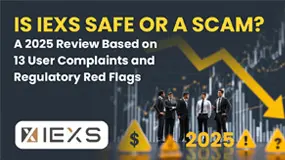简体中文
繁體中文
English
Pусский
日本語
ภาษาไทย
Tiếng Việt
Bahasa Indonesia
Español
हिन्दी
Filippiiniläinen
Français
Deutsch
Português
Türkçe
한국어
العربية
India's Cybersecurity Crisis: Ransomware Takes 300 Small Banks Offline
Abstract:India’s banking sector is grappling with a significant cybersecurity crisis as a ransomware attack has forced nearly 300 small banks offline, according to a report by Reuters. The attack has severely disrupted transaction processing among the affected lenders, highlighting vulnerabilities within the country's financial system.

Indias banking sector is grappling with a significant cybersecurity crisis as a ransomware attack has forced nearly 300 small banks offline, according to a report by Reuters. The attack has severely disrupted transaction processing among the affected lenders, highlighting vulnerabilities within the country's financial system.
The Extent of the Disruption
The ransomware attack primarily targeted C-Edge Technologies, a crucial provider of banking technology to many of Indias smaller financial institutions. As a result, these banks have been cut off from the National Payment Corporation of India (NPCI) system, hampering their ability to process payments.
In a swift response to contain the attack, NPCI issued a public advisory on Wednesday. The advisory noted that NPCI had temporarily isolated C-Edge Technologies from accessing the retail payments system to prevent the ransomware from spreading further within the payment network.
Minimal Impact on the National Scale
Despite the considerable disruption for the affected banks, the overall impact on Indias payment system remains minimal. Regulatory officials have clarified that the banks impacted by the ransomware attack represent only about 0.5% of the country's total payment system volumes. India boasts approximately 1,500 cooperative and regional banks, predominantly operating outside major metropolitan areas. The institutions affected by this attack are a small subset of these banks.
Ongoing Security Measures and Audits
In response to the attack, NPCI is conducting a comprehensive audit to ensure the ransomware does not spread further. This proactive measure aims to safeguard the broader payment system's integrity. The Reserve Bank of India (RBI) and Indian cyber authorities have recently heightened their warnings to banks regarding the escalating risk of cyberattacks.
However, both C-Edge Technologies and the RBI have remained silent on the issue, not responding to requests for comments. This lack of communication has exacerbated concerns and uncertainty among the affected banks and their customers.
Broader Implications and Historical Context
This ransomware attack underscores a growing trend in cyber threats against the financial industry. According to the International Monetary Fund (IMF), over the past two decades, the financial industry has lost $12 billion due to more than 20,000 cyberattacks. This surge in cybersecurity incidents is attributed to the rapid digitalization of financial services and escalating geopolitical tensions.
The COVID-19 pandemic has further exacerbated the situation, with the number of cyberattacks on financial firms doubling. The direct losses incurred by companies in the sector have more than quadrupled since 2017, reaching $2.5 billion.
Conclusion
The ransomware attack on India's small banks serves as a stark reminder of the vulnerabilities within the financial system. While the immediate impact on the national payment infrastructure remains limited, the incident highlights the critical need for robust cybersecurity measures and enhanced preparedness to mitigate future threats. As digitalization continues to transform the banking sector, ensuring the security and resilience of financial institutions against cyber threats becomes increasingly paramount.

Disclaimer:
The views in this article only represent the author's personal views, and do not constitute investment advice on this platform. This platform does not guarantee the accuracy, completeness and timeliness of the information in the article, and will not be liable for any loss caused by the use of or reliance on the information in the article.
Read more

Hankotrade Exposed: Does it Harm Traders with Manipulated MT4 Chart and High Spreads & Slippage?
Have you witnessed a manipulated MT4 chart on Hankotrade login, showing inaccurate trading figures? Have you been victimized by high swap fees, inflated spreads, and massive slippage? Is the payment processing time too long at Hankotrade? Do you face downtime issues, especially when the New York trading session is on? These are some top complaints against the Belize-based forex broker. In this article, we have shared these complaints. Take a look!

Switch Markets Review: Do Traders Face Deposit Discrepancies and Account-related Issues?
Do you fail to deposit your funds into the Switch Markets forex trading account? Earned profits, withdrew them too, but did Switch Markets block your deposits? Wanted to close your trading account due to payment-related issues, but in turn got your emails blocked by the Australia-based forex broker? Faced a negative trading account balance because of illegitimate trade order execution? Many traders have shared these stories about Switch Markets on broker review platforms. In this Switch Markets review article, we have mentioned the same. Read on!

Is IEXS Safe or a Scam? A 2025 Review Based on 13 User Complaints and Regulatory Red Flags
You're asking a direct and important question: Is IEXS safe or a scam? As someone who might trade with them or already does, this is the most important research you can do. While IEXS says it is a global broker with over ten years of experience, a detailed look at its regulatory status and many user reviews shows serious warning signs that cannot be ignored. The evidence suggests a high-risk situation for traders' capital. This review will examine the available information, from official regulatory warnings to concerning first-hand user complaints, to give you a clear and fact-based view of the risks involved in trading with IEXS. Our goal is to give you the facts you need to make a smart decision.

Having Trouble Getting Your Funds Out of IEXS? A Simple Guide to Delays and Solutions
Are you having trouble withdrawing funds from your IEXS account or facing delays getting your funds? Not being able to access your own capital is one of the most stressful situations any trader can face. It breaks down your basic trust with a broker. This isn't just annoying - it's a serious problem that can mess up your financial plans and cause a lot of worry. This guide goes beyond basic advice. We'll look at real user experiences and official regulatory information to give you clear answers. Our goal is to help you understand why IEXS withdrawal problems happen and show you practical steps you can take. We understand your concerns and want to give you the information you need to handle this tough situation.
WikiFX Broker
Latest News
Trillium Financial Broker Exposed: Top Reasons Why Traders are Losing Trust Here
FIBO Group Ltd Review 2025: Find out whether FIBO Group Is Legit or Scam?
Amillex Withdrawal Problems
Is INGOT Brokers Safe or Scam? Critical 2025 Safety Review & Red Flags
150 Years Of Data Destroy Democrat Dogma On Tariffs: Fed Study Finds They Lower, Not Raise, Inflation
CQG Partners with Webull Singapore to Power the Broker’s New Futures Trading Offering
【WikiEXPO Global Expert Interviews】Ashish Kumar Singh: Building a Responsible and Interoperable Web3
Trump: India\s US exports jump despite 50% tariffs as trade tensions ease
IEXS Review 2025: A Complete Expert Analysis
CySEC Flags 21 Unauthorized Broker Websites in 2025 Crackdown
Currency Calculator



